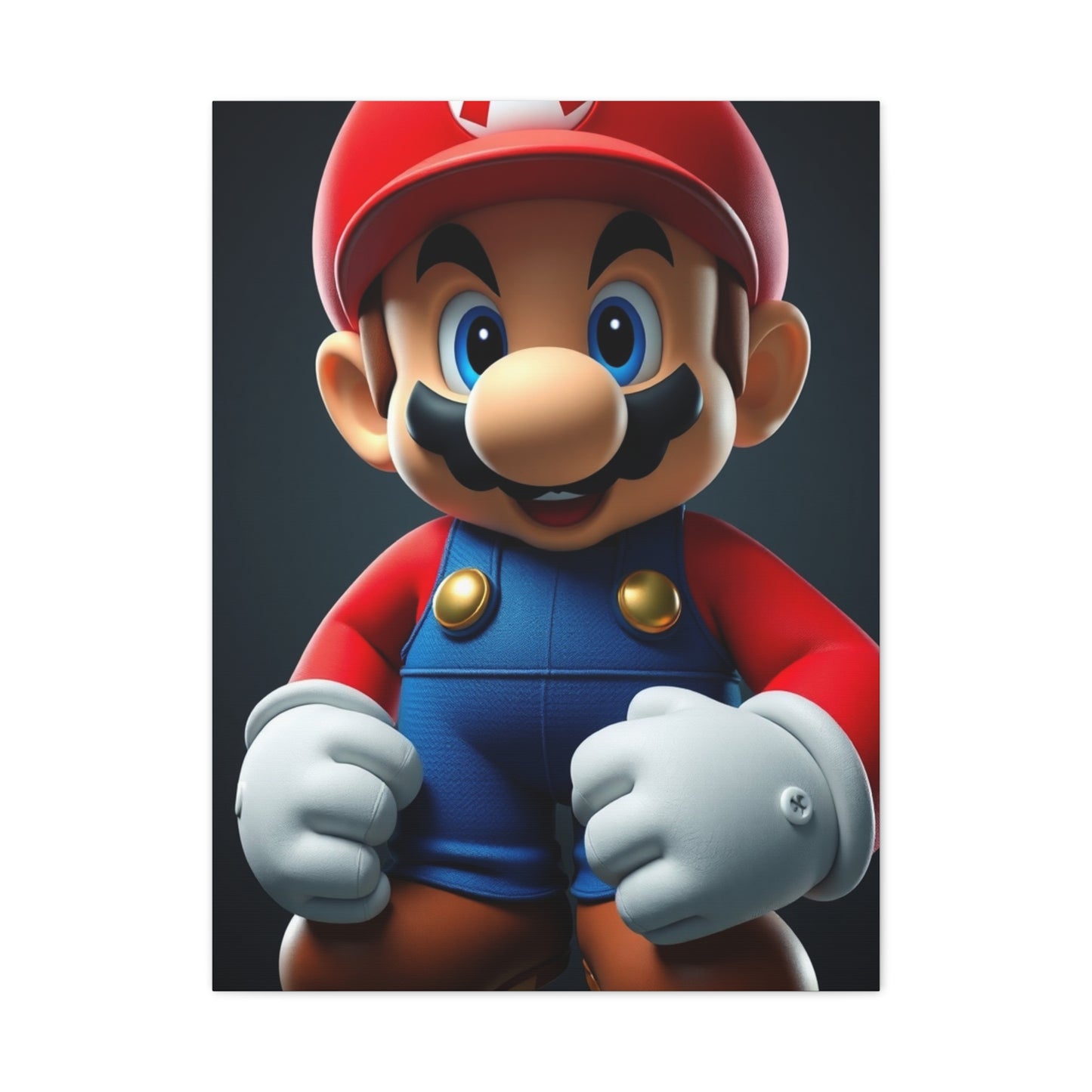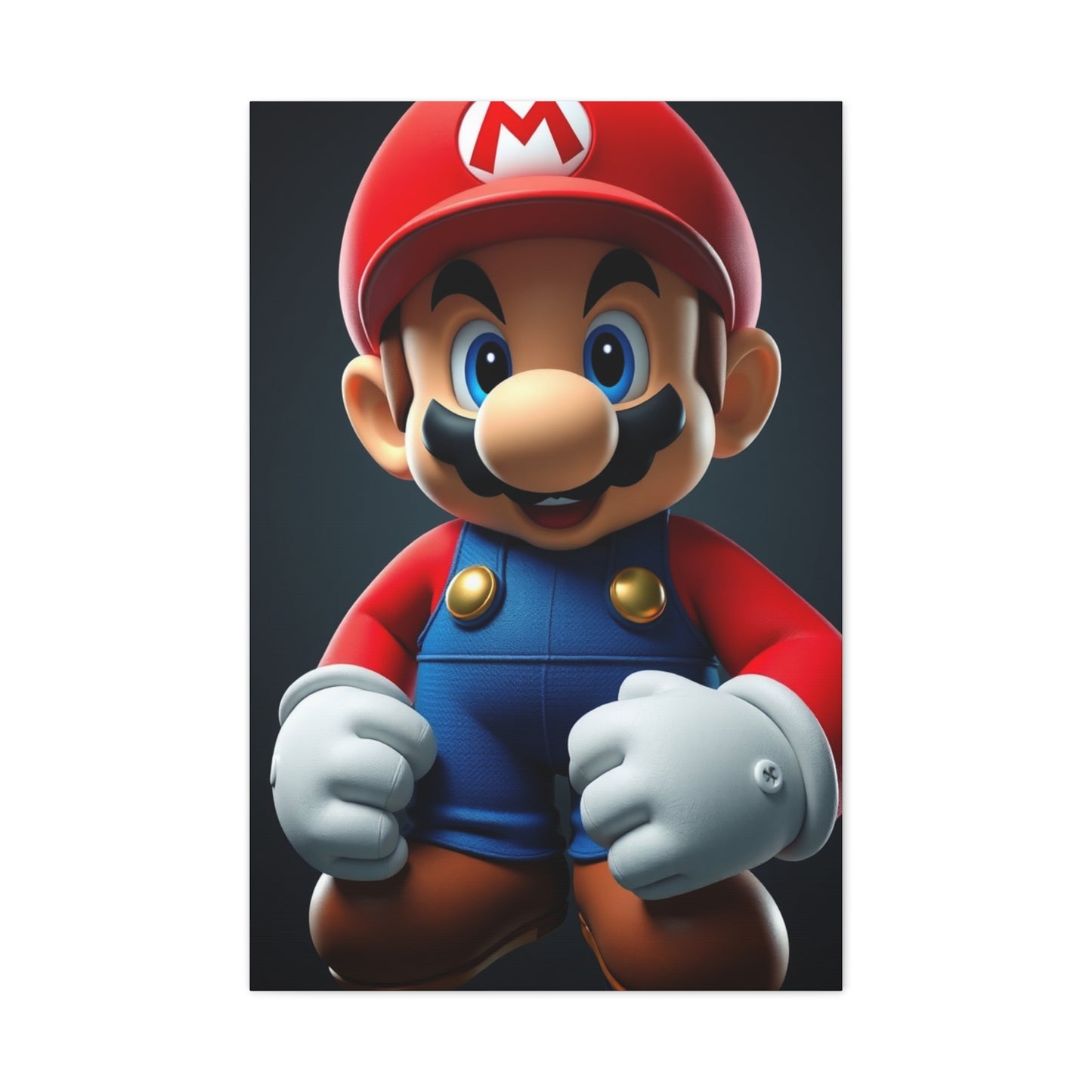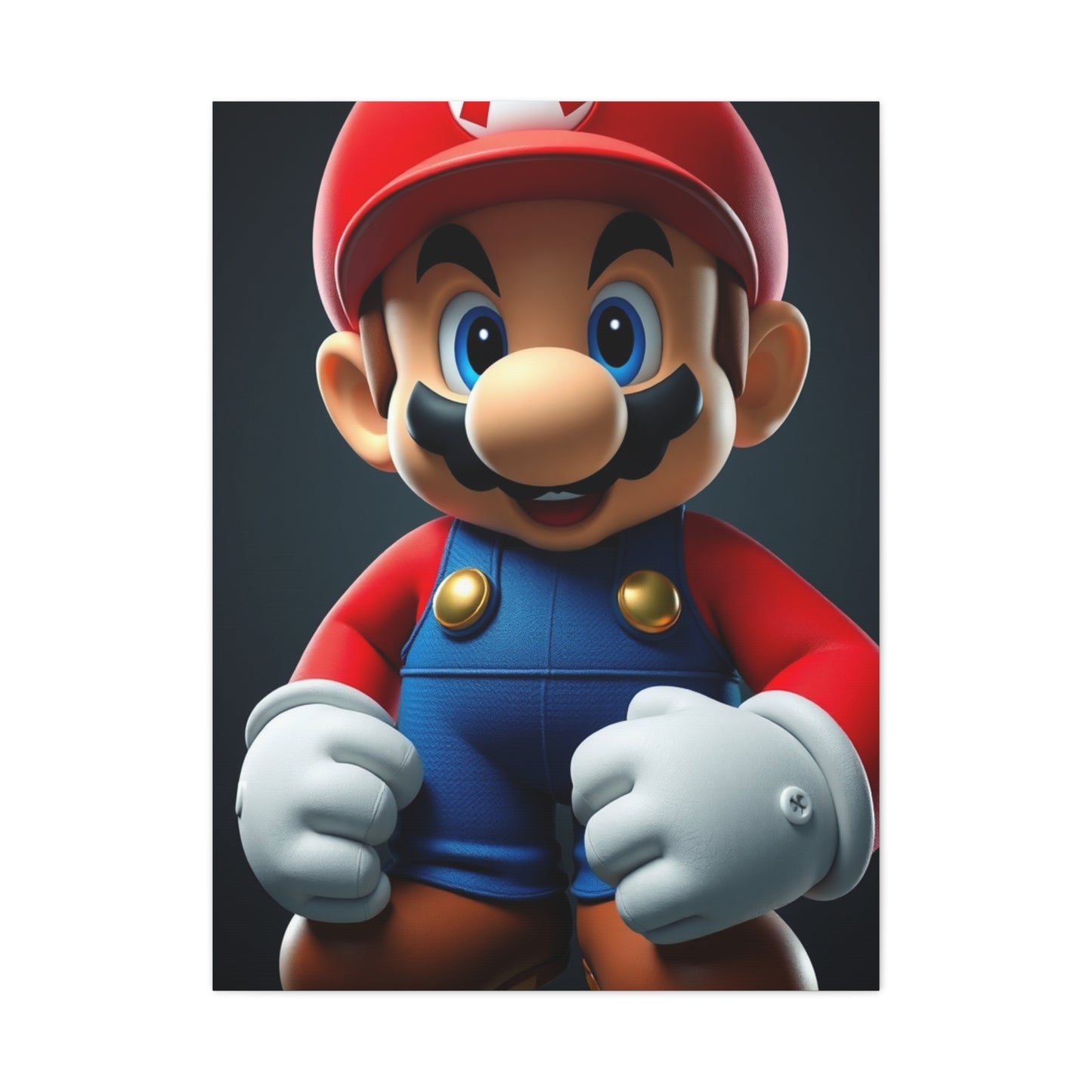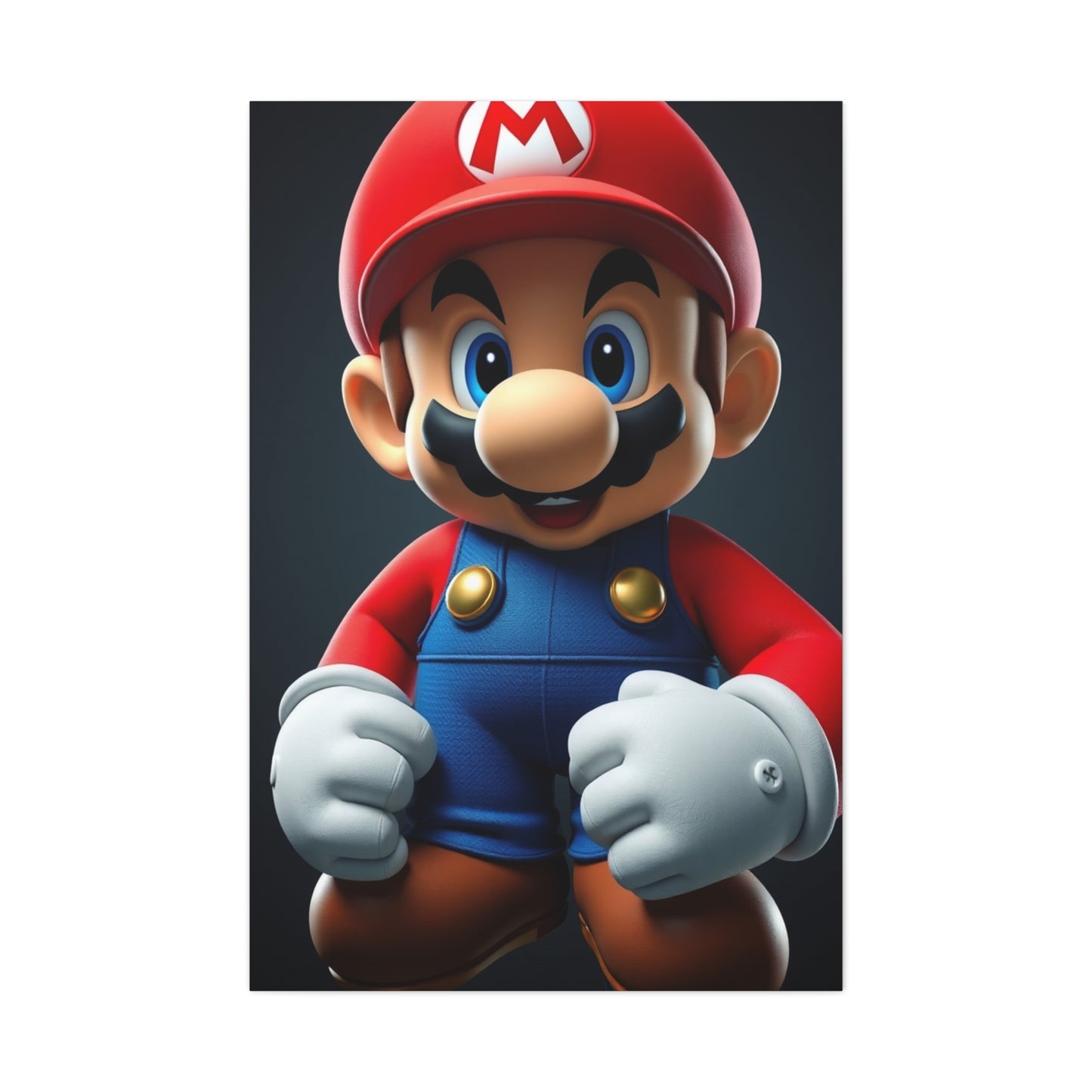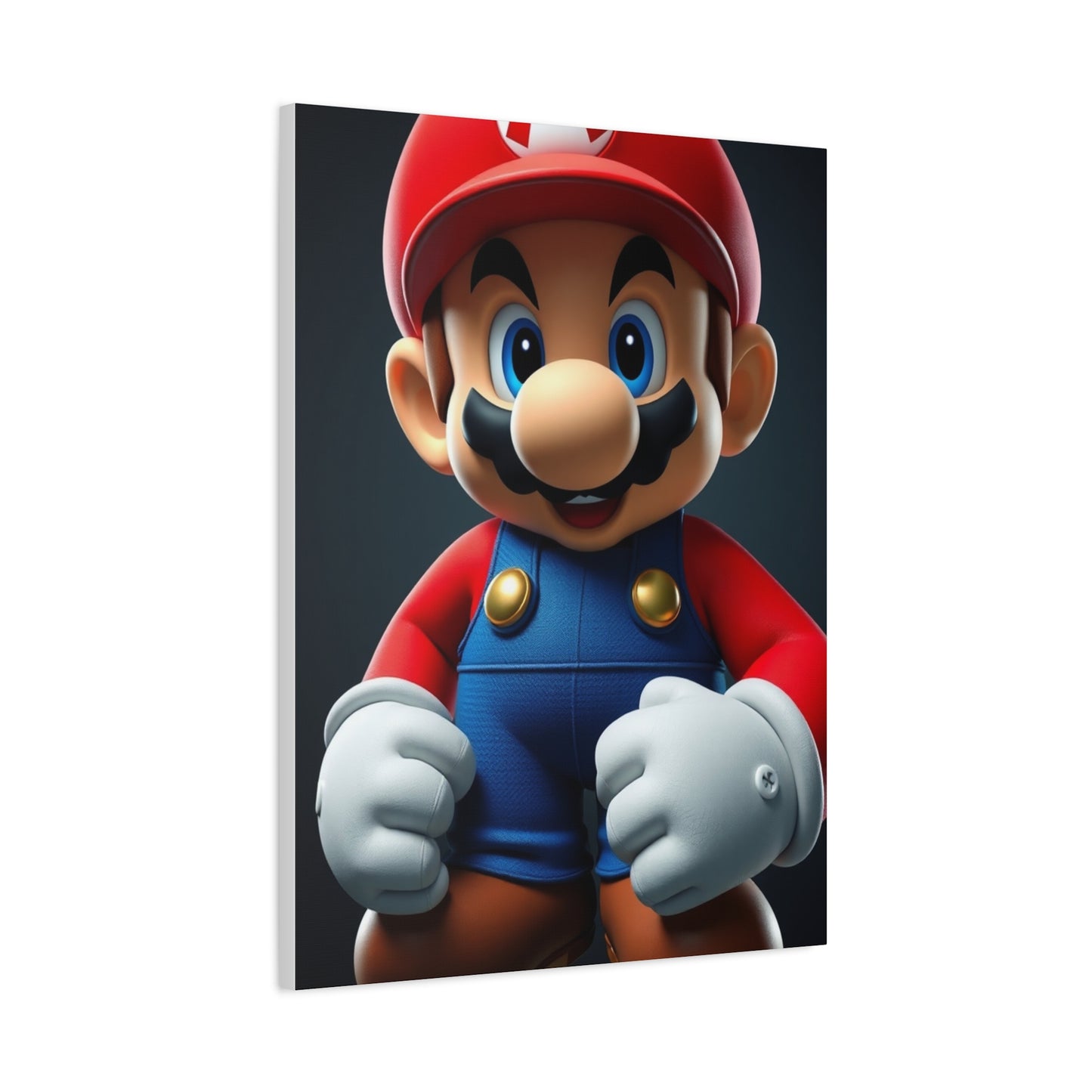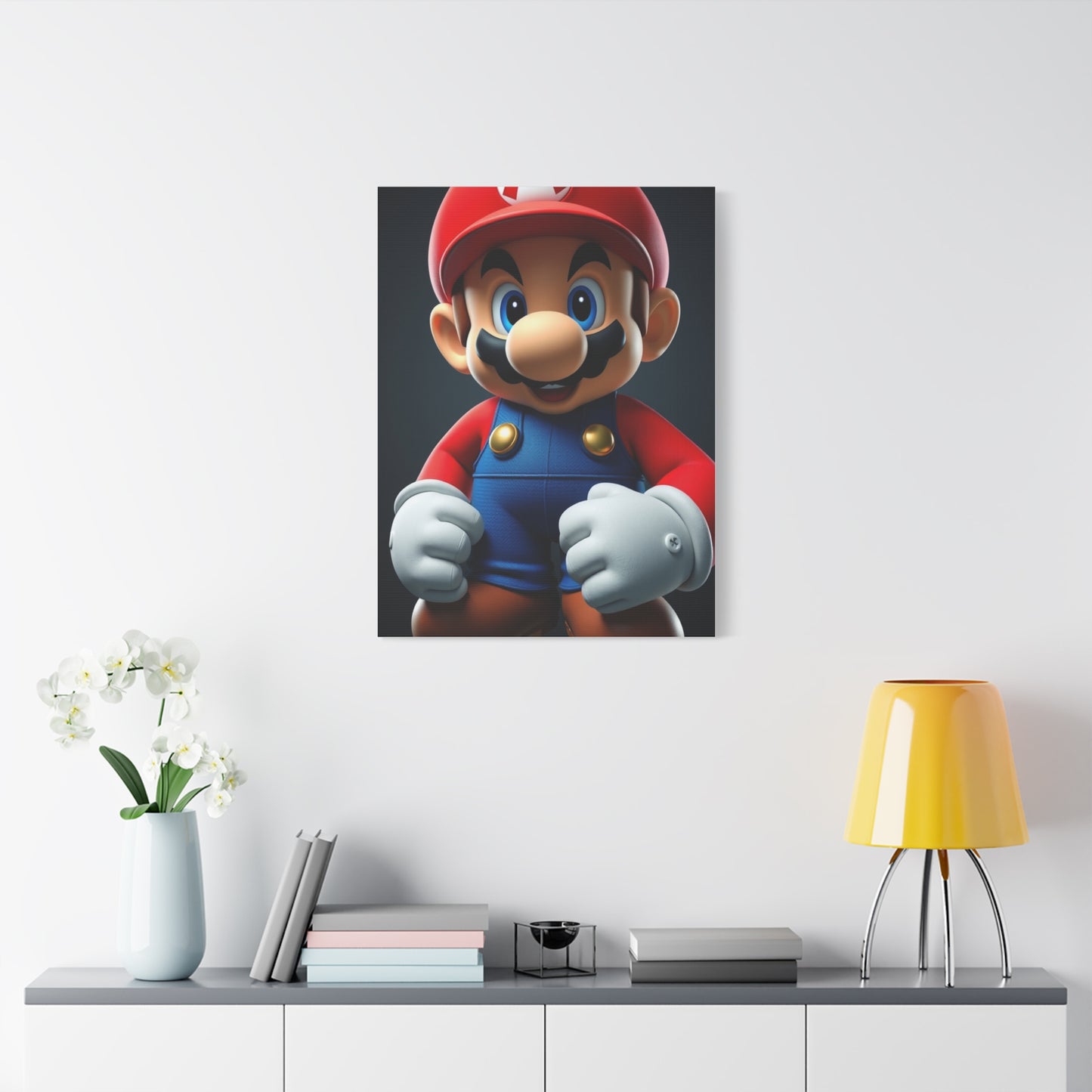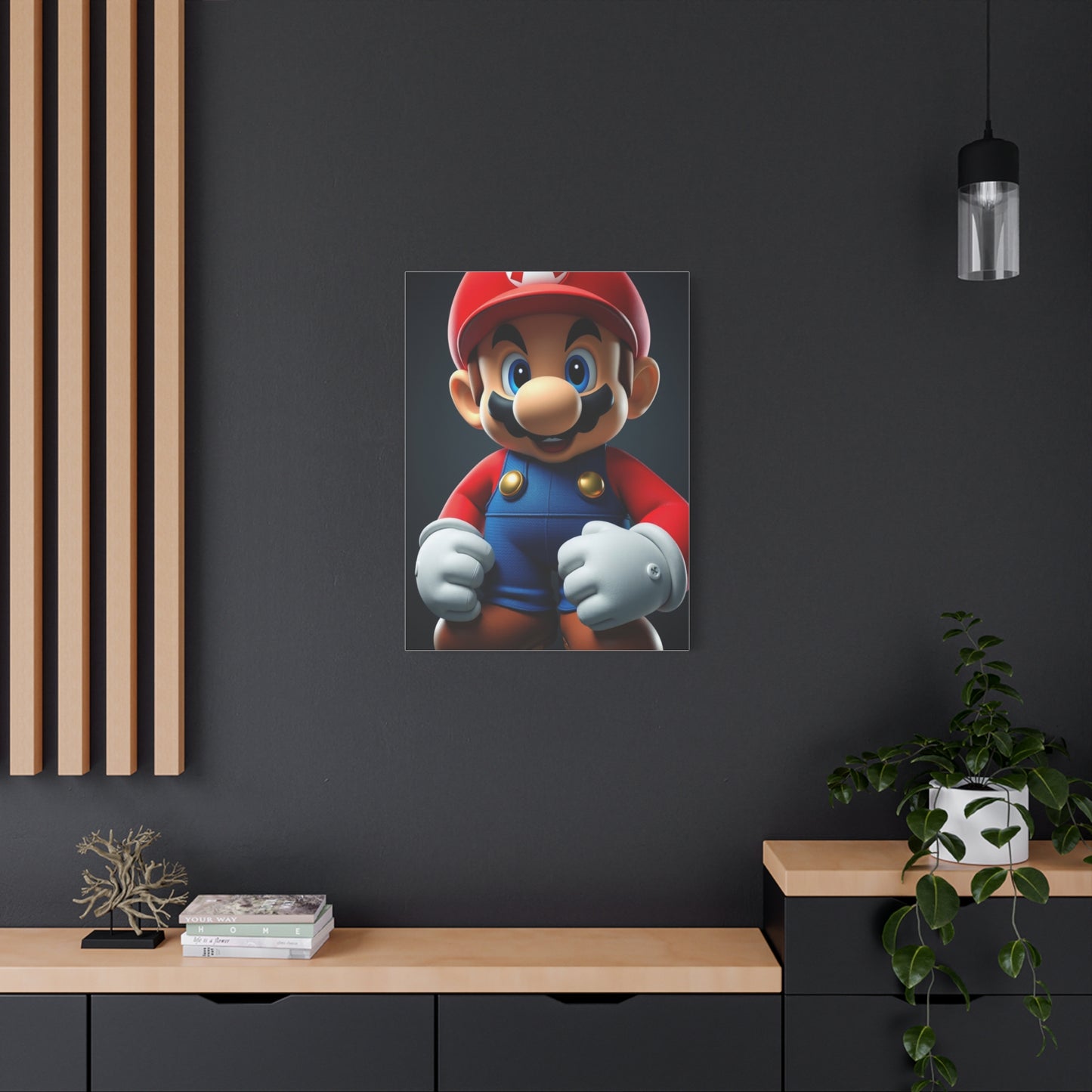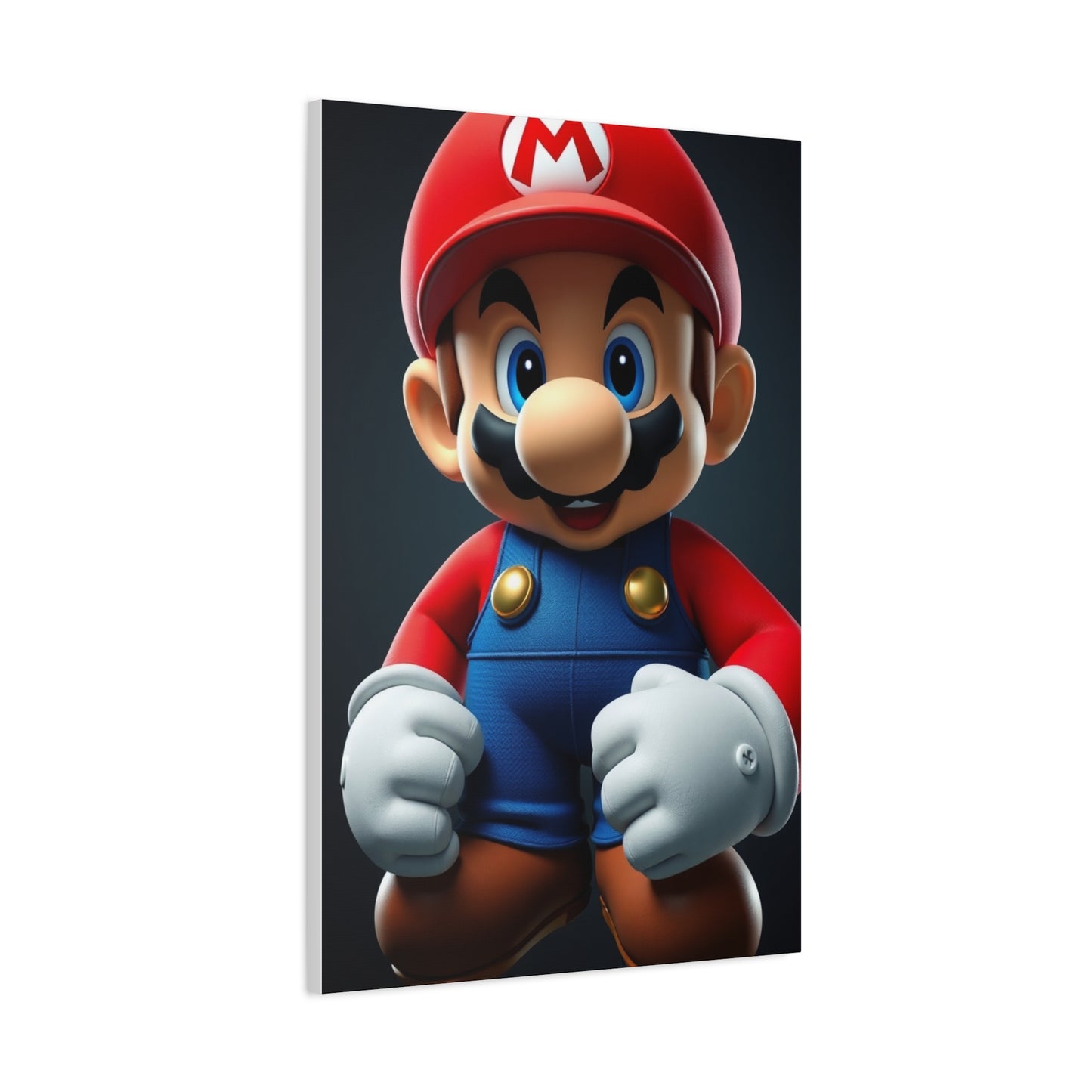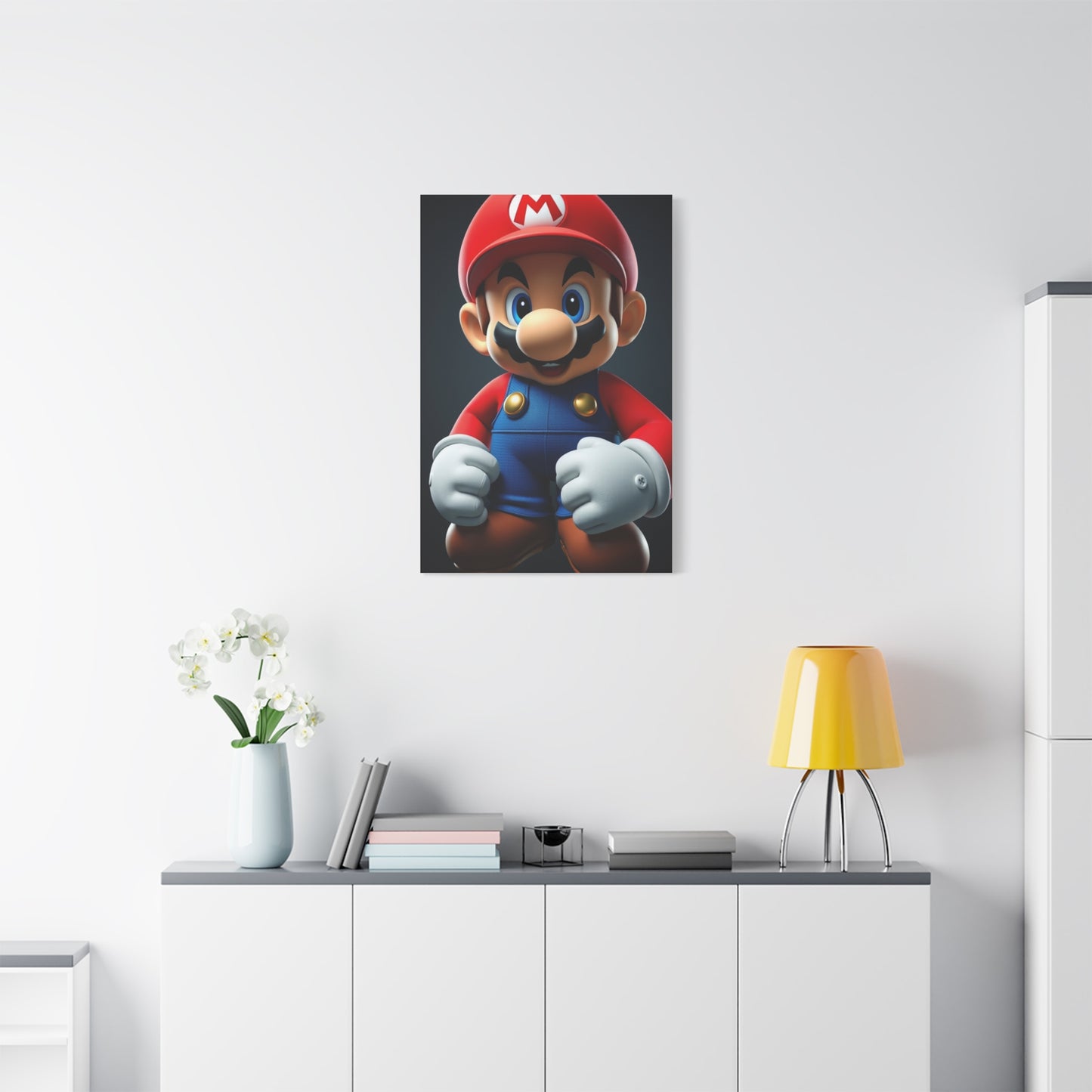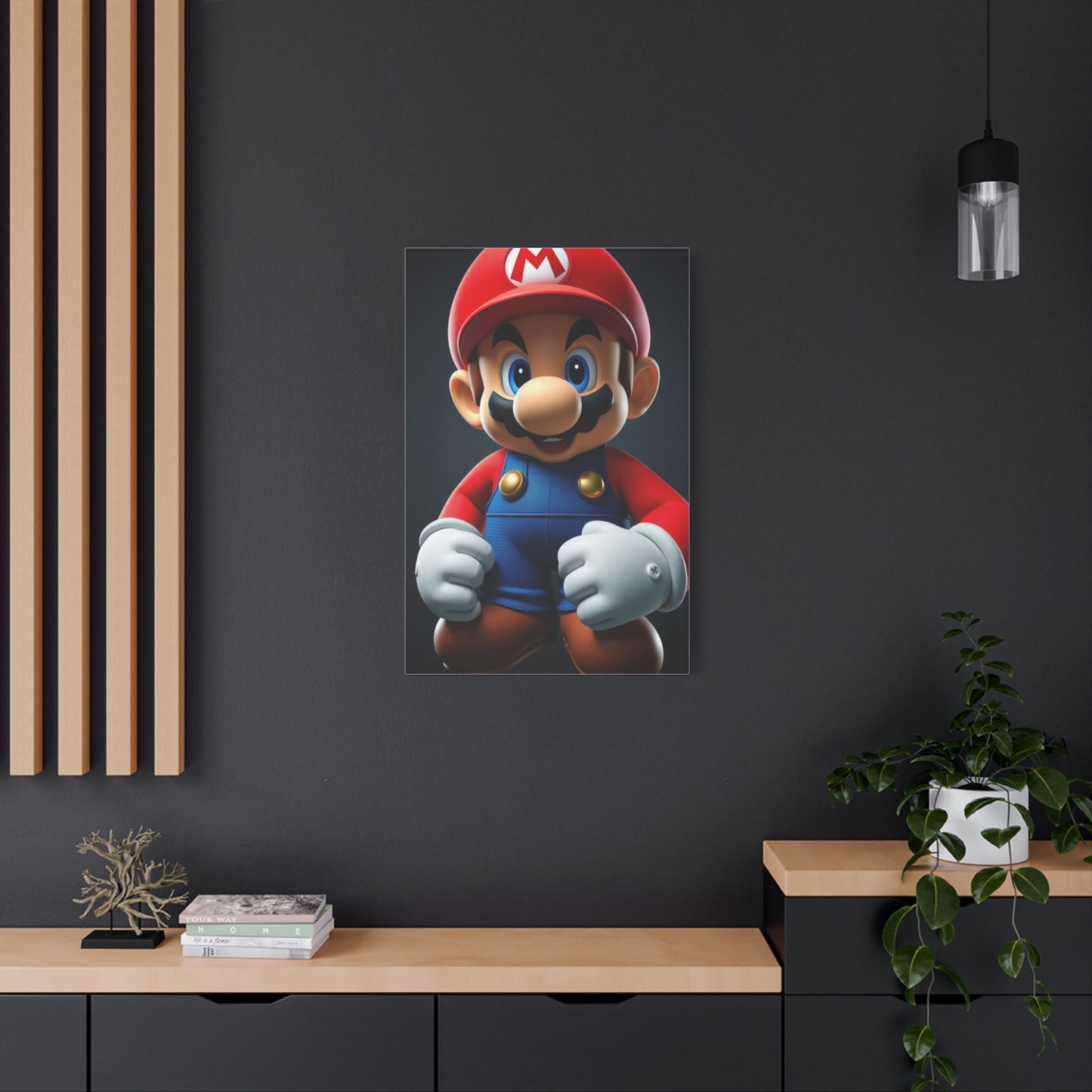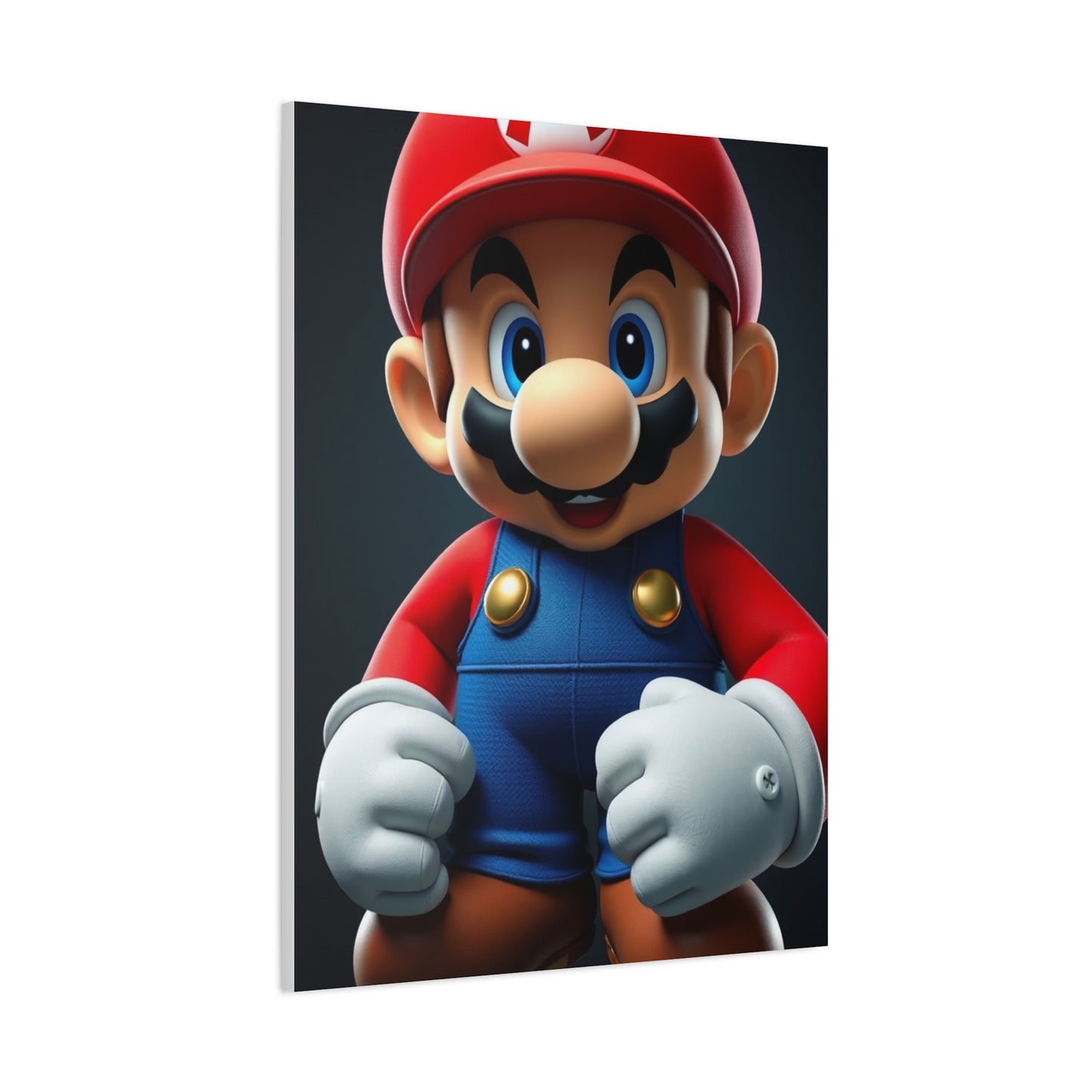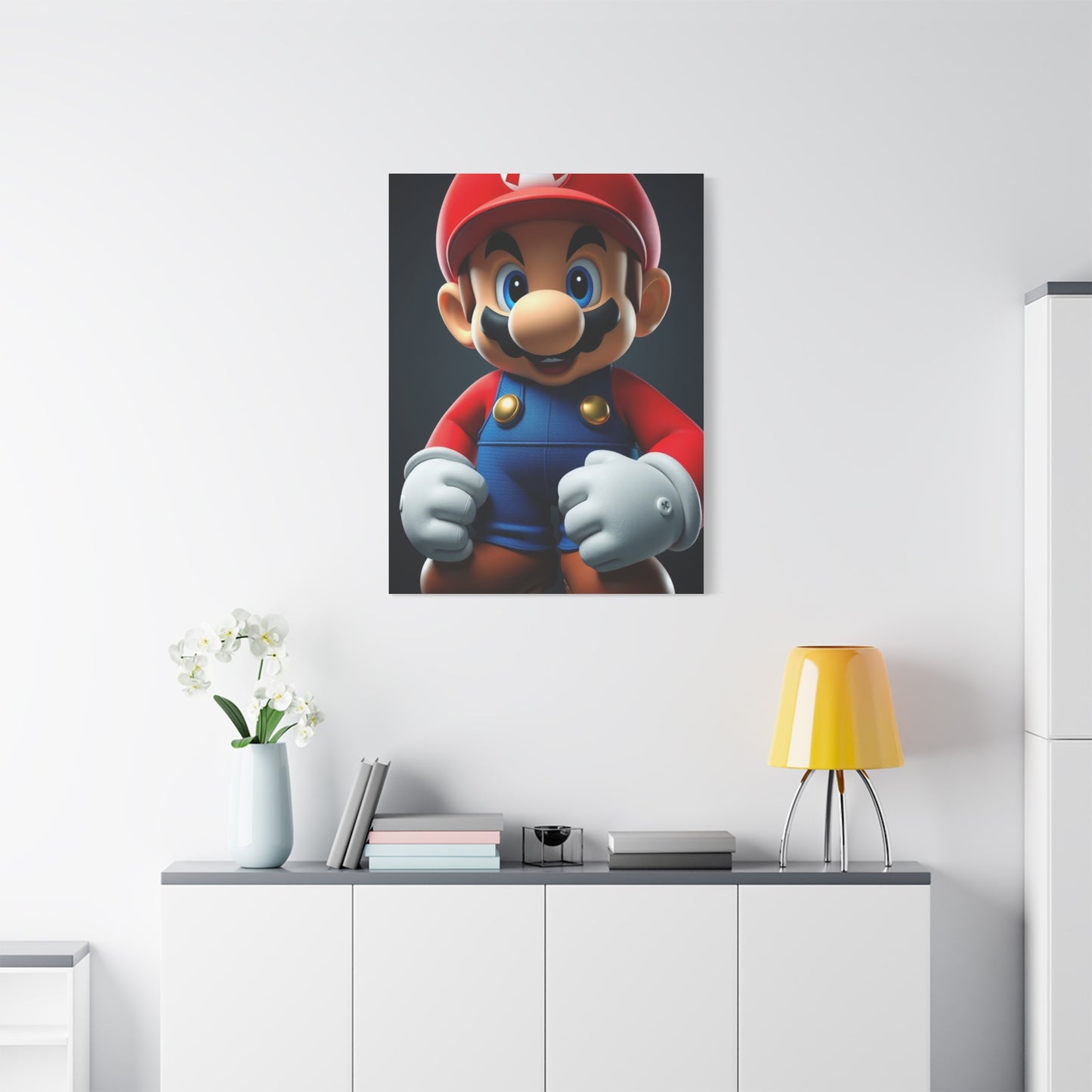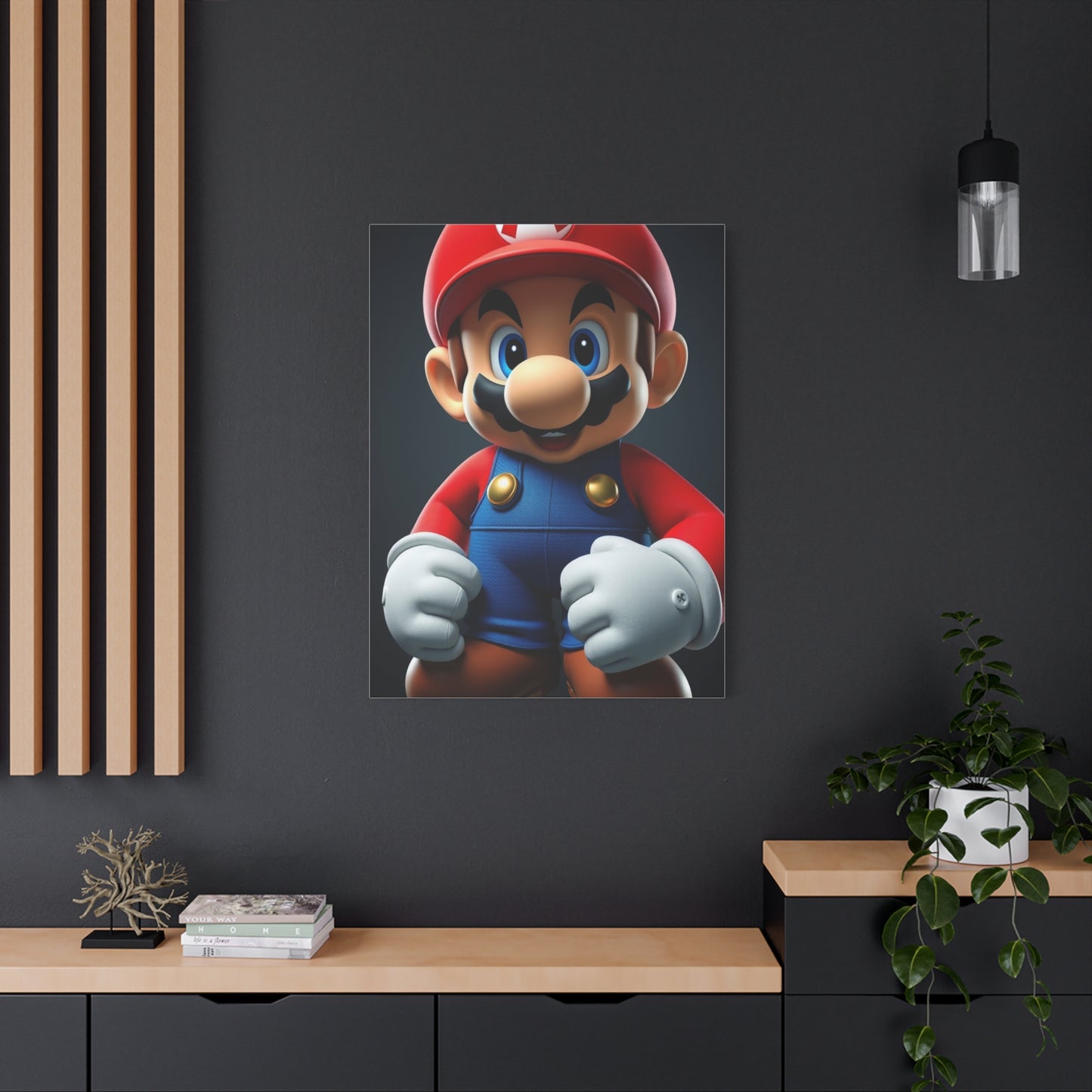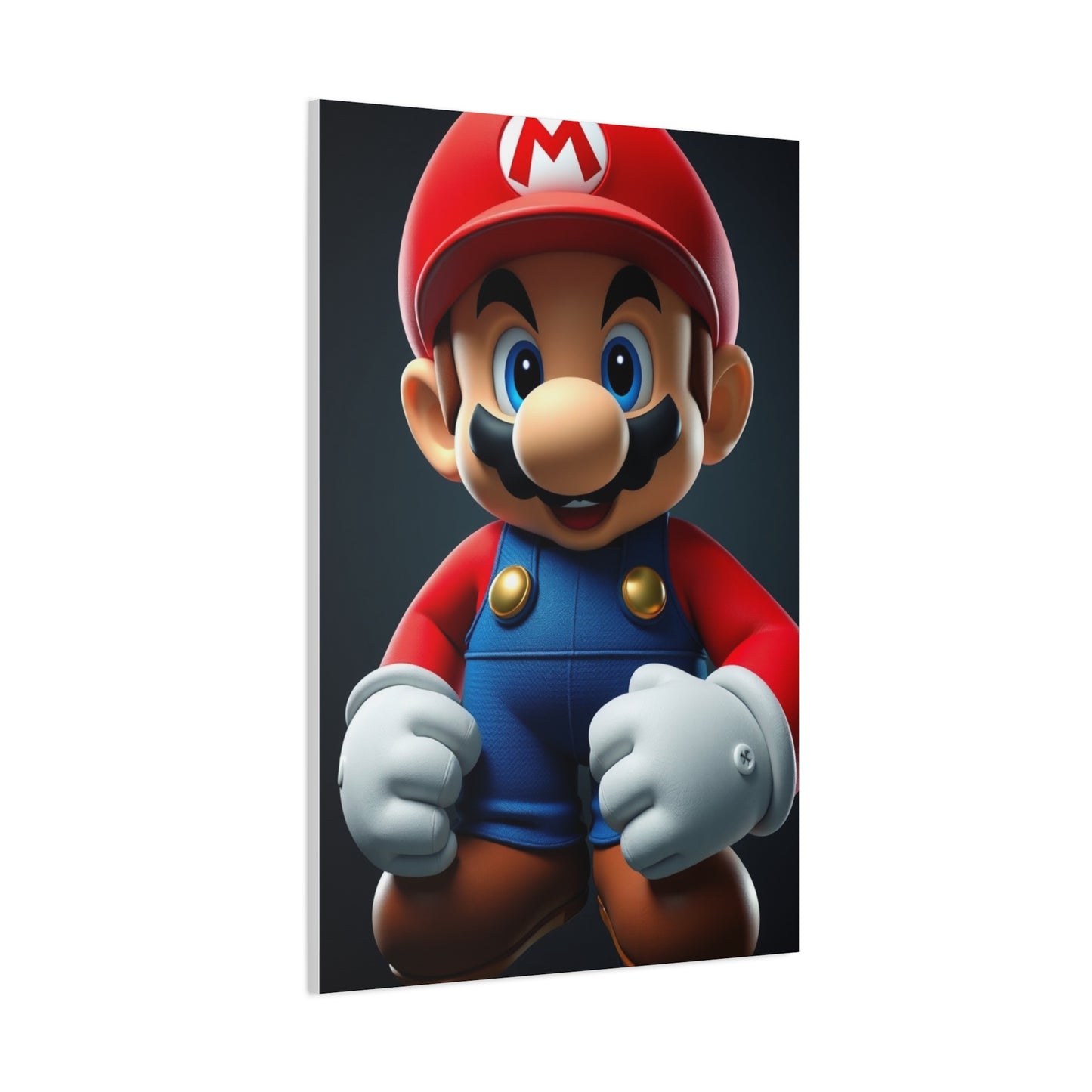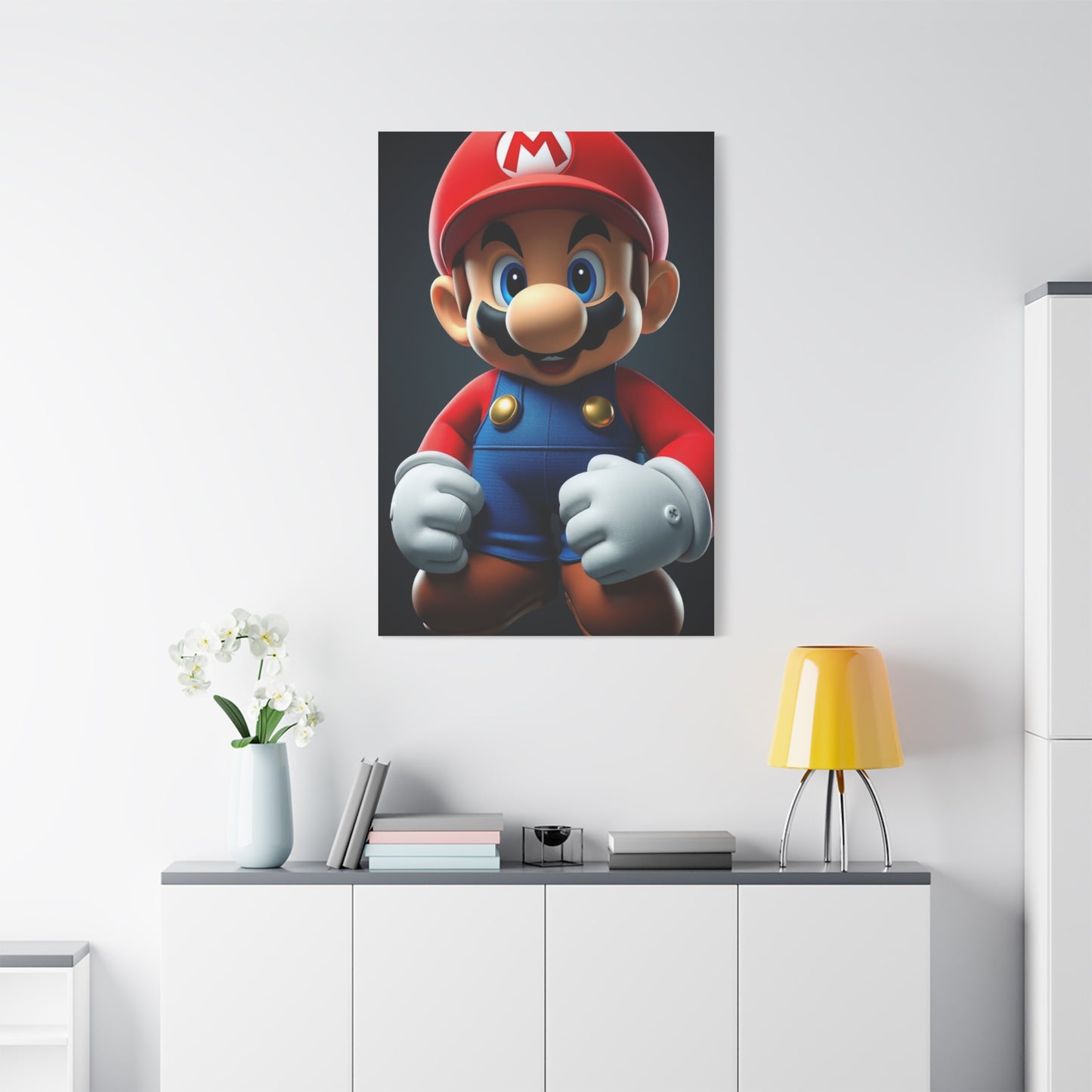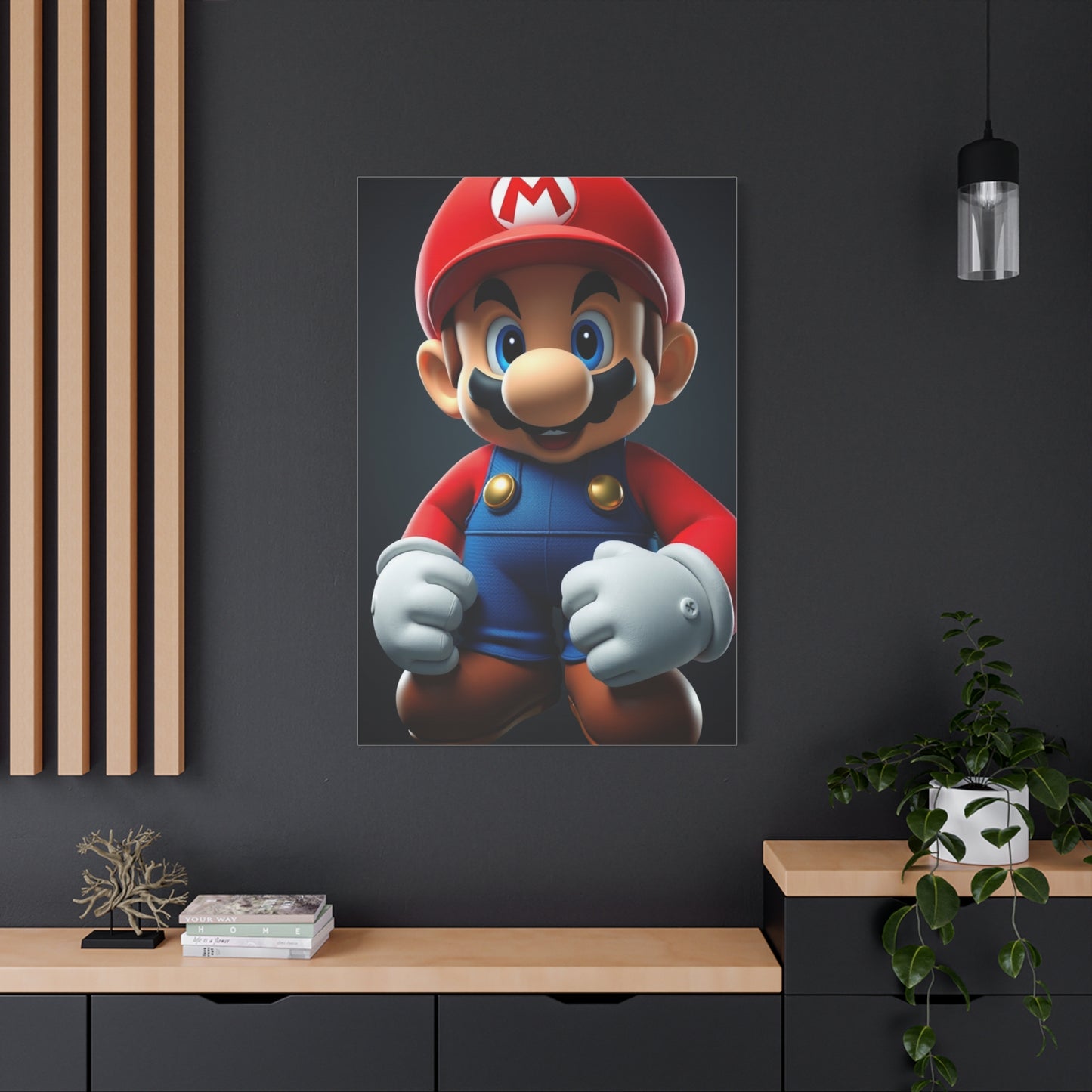Exploring the Whimsy: The Magic Behind the Regal Mushroom Kingdom Canvas
The captivating world of regal mushroom kingdom wall art has emerged as one of the most enchanting trends in contemporary home decoration. These magical artistic creations bring together the whimsical charm of fungi with the sophisticated elegance of royal aesthetics, creating stunning visual narratives that transport viewers into fantastical realms. The growing popularity of these artistic pieces reflects our collective desire to connect with nature while maintaining an air of refined sophistication in our living environments.
Mushroom-themed artwork has evolved far beyond simple botanical illustrations, developing into complex artistic expressions that combine fantasy elements with regal grandeur. These pieces capture the mysterious beauty of fungi while incorporating royal symbols, rich color palettes, and luxurious design elements that speak to our fascination with both the natural world and fairy tale aesthetics.
The appeal of regal fungi on canvas lies in their ability to create focal points that are both conversation starters and meditative visual experiences. Unlike traditional artwork, these pieces invite viewers to explore intricate details while losing themselves in imaginative landscapes where mushrooms reign as majestic sovereigns over enchanted forests and magical kingdoms.
The Artistic Evolution of Mushroom-Themed Canvas Art
The journey of mushroom artwork from scientific illustration to fine art represents a fascinating evolution in artistic expression. Early botanical drawings of fungi served purely educational purposes, meticulously documenting various species with clinical precision. However, contemporary artists have revolutionized this approach, infusing mushroom imagery with emotional depth, symbolic meaning, and aesthetic beauty that transcends mere documentation.
Modern interpretations of fungi in art explore themes of transformation, hidden worlds, and the delicate balance between fragility and resilience. Artists working in this genre often draw inspiration from folklore, fairy tales, and fantasy literature, where mushrooms frequently appear as magical elements connecting earthly and supernatural realms.
The transition from scientific accuracy to artistic interpretation has opened up endless possibilities for creative expression. Artists now experiment with scale, proportion, and color to create mushroom imagery that challenges conventional perceptions while celebrating the inherent beauty of these fascinating organisms.
The incorporation of regal elements into mushroom art reflects our cultural associations between fungi and mystery, magic, and hidden treasures. Throughout history, mushrooms have been linked to fairy rings, forest spirits, and otherworldly phenomena, making them perfect subjects for artwork that aims to evoke wonder and enchantment.
Contemporary mushroom art often features fantastical proportions, with tiny mushrooms depicted as towering structures in miniature worlds, or giant fungi serving as shelters and gathering places for imaginary creatures. This playful manipulation of scale adds a dreamlike quality that enhances the magical atmosphere these pieces are designed to create.
Enchanted Mushroom Kingdom Design Elements
The creation of enchanted mushroom kingdom designs requires careful attention to various visual elements that work together to establish a cohesive and compelling artistic narrative. Color selection plays a crucial role in establishing the mood and atmosphere of these pieces, with artists often favoring rich, saturated hues that suggest luxury and mystery.
Deep purples, midnight blues, and forest greens frequently serve as background colors, creating dramatic contrasts that allow the mushrooms to emerge as luminous focal points. Golden accents, copper highlights, and silver details add metallic richness that reinforces the regal theme while suggesting the precious nature of these magical organisms.
Texture development in mushroom kingdom art involves creating surfaces that appear both organic and otherworldly. Artists employ various techniques to suggest the velvety caps of mushrooms, the delicate gills underneath, and the sturdy yet graceful stems that support these magnificent structures. The interplay between smooth and textured areas creates visual interest and invites closer examination.
Compositional strategies in mushroom kingdom art often involve creating depth through layering, with foreground mushrooms rendered in sharp detail while background elements fade into mysterious shadows. This technique draws viewers into the artwork, encouraging them to explore the various levels of the composition and discover hidden details within the fungal landscape.
Lighting effects in mushroom kingdom art frequently employ dramatic contrasts between light and shadow, creating an atmosphere of mystery and magic. Many pieces feature bioluminescent elements, suggesting that the mushrooms themselves are sources of ethereal light that illuminates their magical surroundings.
The incorporation of architectural elements, such as fairy-tale castles, ornate doorways, and decorative bridges, helps establish the royal theme while creating narrative possibilities within the artwork. These elements suggest that the mushroom kingdoms are inhabited spaces where fantastical stories unfold.
Whimsical Regal Mushroom Scenes and Their Cultural Impact
Whimsical regal mushroom scenes have captured the imagination of art enthusiasts and casual observers alike, creating a cultural phenomenon that extends beyond traditional art appreciation. These artistic creations tap into universal themes of wonder, transformation, and the beauty found in unexpected places, resonating with viewers across different age groups and cultural backgrounds.
The whimsical nature of these pieces often incorporates playful elements such as tiny doors at the base of mushroom stems, suggesting that these fungi serve as homes for miniature inhabitants. Staircases spiraling around mushroom stalks, bridges connecting different mushroom caps, and gardens surrounding these magical structures all contribute to the narrative richness of these artistic compositions.
The psychological appeal of whimsical mushroom art lies in its ability to transport viewers away from the mundane realities of daily life into realms where imagination reigns supreme. This escapist quality has made these pieces particularly popular in environments where people seek relaxation and mental rejuvenation, such as bedrooms, reading nooks, and meditation areas.
The cultural impact of regal mushroom art extends into various creative industries, influencing fashion design, home decor trends, and even architectural concepts. The aesthetic principles embodied in these artworks have inspired designers to incorporate organic forms and fantastical elements into practical applications, creating products that bring a touch of magic into everyday life.
Social media platforms have played a significant role in popularizing whimsical mushroom art, with artists sharing their creations and inspiring others to explore this artistic genre. The highly visual nature of these platforms makes them ideal for showcasing the intricate details and rich colors that characterize high-quality mushroom kingdom artwork.
The therapeutic qualities associated with viewing and creating mushroom art have been recognized by art therapists and mental health professionals. The meditative process of observing intricate fungal details and losing oneself in fantastical landscapes can provide stress relief and emotional restoration for viewers seeking respite from contemporary pressures.
Mushroom Kingdom Royal Canvas: Technical Artistic Approaches
Creating mushroom kingdom royal canvas pieces requires mastery of various technical approaches that bring these fantastical visions to life. Artists working in this genre must combine botanical knowledge with imagination, understanding the natural forms and growth patterns of fungi while adapting these characteristics to serve their artistic vision.
Color theory plays a fundamental role in developing effective mushroom kingdom compositions. Artists must understand how different color combinations create specific emotional responses while maintaining visual harmony throughout complex compositions. The challenge lies in balancing naturalistic coloring with fantastical elements that enhance the magical atmosphere without overwhelming the viewer.
Brushwork techniques vary significantly depending on the desired effect, with some areas requiring precise, detailed strokes to capture the intricate textures of mushroom surfaces, while other areas benefit from broader, more impressionistic approaches that create atmospheric backgrounds and suggest mysterious depths within the fungal landscape.
Layering strategies in mushroom kingdom art involve building up colors and textures gradually, allowing artists to create rich, complex surfaces that reward close examination. This approach enables the creation of artworks that reveal new details upon repeated viewing, maintaining long-term visual interest for collectors and enthusiasts.
Perspective manipulation in mushroom kingdom art often involves creating impossible viewpoints that enhance the fantastical nature of these compositions. Artists might combine multiple perspective points within a single piece, creating visual experiences that feel dreamlike and otherworldly while maintaining overall compositional coherence.
The integration of mixed media elements allows artists to incorporate textures and materials that enhance the tactile quality of mushroom kingdom art. Techniques such as collage, texture paste application, and metallic leaf addition can create surfaces that catch and reflect light in ways that enhance the magical atmosphere of these pieces.
Digital art techniques have expanded the possibilities for mushroom kingdom creation, allowing artists to experiment with effects and compositions that would be challenging or impossible to achieve through traditional media. Digital tools enable precise control over color gradients, lighting effects, and texture applications while maintaining the organic feel essential to successful mushroom art.
Fantasy Meets Regal Elegance in Contemporary Art
The fusion of fantasy elements with regal elegance in contemporary mushroom art represents a sophisticated artistic approach that appeals to viewers seeking both visual beauty and conceptual depth. This combination acknowledges the inherent majesty found in natural forms while elevating these subjects through artistic interpretation that emphasizes luxury and refinement.
The regal aspect of mushroom kingdom art often manifests through the incorporation of precious metal colors, ornate decorative patterns, and compositions that suggest ceremony and grandeur. These elements transform humble fungi into subjects worthy of royal courts, creating artwork that celebrates both natural beauty and human creativity.
Fantasy elements in mushroom art serve to expand the narrative possibilities within each piece, creating worlds where natural laws bend to accommodate magical phenomena. Flying mushrooms, crystalline formations growing from fungal caps, and atmospheric effects that suggest supernatural energy all contribute to the fantastical quality that distinguishes this art form from realistic botanical illustration.
The elegance component of regal mushroom art requires careful attention to proportions, color harmonies, and compositional balance. Artists must create pieces that feel refined and sophisticated while maintaining the organic spontaneity that makes mushroom subjects so appealing. This balance between control and naturalness requires considerable artistic skill and aesthetic sensitivity.
Contemporary interpretations of regal mushroom themes often incorporate modern design principles while honoring traditional artistic values. This approach creates artworks that feel both timeless and current, appealing to collectors who appreciate classical beauty enhanced by contemporary innovation.
The market for fantasy-elegance mushroom art has grown significantly as collectors increasingly seek artwork that combines visual appeal with storytelling potential. These pieces serve as conversation starters while providing long-term viewing pleasure through their rich detail and imaginative content.
The influence of digital media and contemporary fantasy literature has expanded the visual vocabulary available to artists working in this genre. References to popular fantasy works, gaming aesthetics, and digital art techniques have all contributed to the evolution of mushroom kingdom art while maintaining its core appeal to viewers seeking beauty and wonder.
Magical Mushroom Art Prints: Production and Quality Considerations
The production of high-quality magical mushroom art prints requires careful attention to technical specifications that preserve the artist's original vision while ensuring longevity and visual impact. Print quality directly affects the viewer's experience, making technical excellence essential for successful mushroom kingdom art reproduction.
Color accuracy in mushroom art prints demands sophisticated color management systems that can reproduce the subtle gradations and rich saturations characteristic of high-quality original artworks. The complex color palettes typical of mushroom kingdom art challenge printing technologies, requiring careful calibration and premium materials to achieve acceptable results.
Paper selection for mushroom art prints significantly impacts the final appearance and longevity of these pieces. Different paper types interact with inks in various ways, affecting color saturation, texture appearance, and archival stability. Artists and publishers must consider these factors when selecting reproduction materials that will best serve their artistic vision.
Printing technology choices influence both the appearance and cost-effectiveness of mushroom art reproduction. High-end giclée printing offers superior color accuracy and longevity but requires significant investment, while digital printing technologies provide more affordable options with acceptable quality for many applications.
Size considerations in mushroom art print production must balance impact with practicality, ensuring that prints maintain visual strength while remaining suitable for typical display environments. The intricate details characteristic of mushroom kingdom art often require larger formats to be fully appreciated, creating challenges for artists seeking to reach broader markets.
Edition numbering and authentication practices for mushroom art prints help establish value while protecting both artists and collectors from unauthorized reproduction. These practices require careful record-keeping and secure authentication methods that prevent counterfeiting while maintaining accessibility for legitimate purchasers.
Distribution strategies for mushroom art prints must consider various market segments, from casual buyers seeking affordable decoration to serious collectors willing to invest in premium reproductions. This diversity requires flexible production approaches that can serve different quality and price points without compromising the artist's reputation.
Regal Forest Kingdom on Canvas: Environmental Storytelling
Environmental storytelling in regal forest kingdom artwork involves creating visual narratives that suggest rich histories and complex relationships between various elements within fungal landscapes. These compositions go beyond mere decoration to become windows into imaginary worlds where every detail contributes to an overarching story.
The development of convincing forest environments requires understanding of natural ecosystems while maintaining the flexibility to adapt these systems to serve artistic and narrative purposes. Artists must balance biological accuracy with creative interpretation, creating environments that feel authentic while supporting fantastical elements.
Atmospheric perspective in forest kingdom art helps establish depth and scale within complex compositions. The careful gradation of color and detail from foreground to background creates convincing spatial relationships while guiding the viewer's eye through the composition in ways that support the intended narrative flow.
Seasonal representation in mushroom forest art adds temporal dimensions to these static images, suggesting cycles of growth, decay, and renewal that mirror natural processes while supporting themes of transformation and magic. Different seasonal treatments can dramatically alter the mood and meaning of mushroom kingdom compositions.
Wildlife integration in forest kingdom art provides opportunities for additional storytelling elements while creating more dynamic and engaging compositions. The careful placement of insects, small mammals, and fantastical creatures helps bring these environments to life while maintaining focus on the primary mushroom subjects.
Weather effects in mushroom forest art can enhance mood and atmosphere while creating visual interest through effects such as dappled sunlight, morning mist, or gentle rain. These environmental elements help establish specific times and conditions while contributing to the overall magical atmosphere of the artwork.
The suggestion of human or fairy presence through architectural elements, pathways, and cultivation signs helps establish these forest kingdoms as inhabited environments where stories unfold. These subtle indicators of intelligent presence add narrative depth without overwhelming the natural beauty of the fungal subjects.
Mushroom Kingdom Wall Masterpiece: Creating Focal Points
The creation of mushroom kingdom wall masterpieces requires understanding how these artworks function within larger decorative schemes while maintaining their individual impact and artistic integrity. These pieces must serve as effective focal points while harmonizing with surrounding elements in residential and commercial environments.
Scale considerations for wall masterpieces involve balancing visual impact with spatial appropriateness, ensuring that mushroom kingdom art enhances rather than overwhelms its display environment. Large-scale pieces require careful planning to achieve maximum effect while maintaining viewing comfort for observers.
Color coordination between mushroom kingdom art and existing decor requires sensitivity to both the artwork's inherent color palette and the surrounding environment's chromatic scheme. Successful integration enhances both the artwork and its setting while avoiding visual conflicts that diminish overall aesthetic impact.
Lighting design for mushroom kingdom wall art significantly affects the viewer's experience and the artwork's long-term preservation. Proper illumination enhances the rich colors and intricate details characteristic of quality mushroom art while protecting these pieces from light-induced deterioration.
Framing choices for mushroom kingdom masterpieces must complement the artwork's aesthetic while providing appropriate protection and visual separation from surrounding elements. The frame becomes part of the overall artistic statement, requiring careful selection that enhances rather than detracts from the primary composition.
Placement strategies for mushroom kingdom wall art consider viewing angles, traffic patterns, and the relationship between the artwork and other room elements. Optimal placement maximizes the artwork's impact while ensuring comfortable viewing experiences for observers approaching from various directions.
Grouping strategies for multiple mushroom kingdom pieces require understanding how individual artworks interact visually while maintaining their distinct identities. Successful groupings create unified visual experiences that exceed the impact of individual pieces while avoiding visual chaos or competition between elements.
Elegant Fungi-Inspired Art: Aesthetic Principles and Design Philosophy
Elegant fungi-inspired art operates according to specific aesthetic principles that distinguish refined artistic interpretations from purely decorative or illustrative approaches. These principles guide artists in creating works that achieve both visual beauty and conceptual depth while honoring the natural characteristics that make fungi such compelling subjects.
The principle of selective emphasis in elegant mushroom art involves choosing specific aspects of fungal characteristics to highlight while subordinating other elements to support the overall artistic vision. This selective approach prevents visual confusion while creating clear hierarchies that guide viewer attention through complex compositions.
Harmonic proportion in mushroom art requires understanding the mathematical relationships that create visually pleasing compositions while adapting these principles to accommodate the organic irregularities that make fungal subjects so appealing. The balance between geometric order and natural spontaneity defines successful elegant mushroom art.
Color sophistication in fungi-inspired art goes beyond mere accuracy to explore the emotional and symbolic potential of various color combinations. Elegant approaches to mushroom art color often involve subtle variations within limited palettes that create rich visual experiences without overwhelming the viewer with chromatic complexity.
Textural refinement in mushroom art involves developing surface qualities that suggest both the tactile characteristics of actual fungi and the artistic interpretation that transforms these subjects into elegant artistic statements. The interplay between realistic and stylized textural elements defines the sophisticated approach to mushroom art.
Compositional elegance in fungi-inspired art requires creating visual pathways that lead viewers through complex images while maintaining overall unity and coherence. This involves understanding how individual elements relate to create larger patterns while avoiding both monotony and chaos.
The integration of negative areas in elegant mushroom art provides visual rest areas that enhance appreciation of more complex regions while contributing to overall compositional balance. The thoughtful use of empty or simplified areas demonstrates artistic maturity and understanding of visual perception principles.
Regal Mushrooms for Stylish Walls: Market Trends and Consumer Preferences
The market for regal mushroom wall art has experienced significant growth as consumers increasingly seek unique decorative options that combine natural subjects with sophisticated artistic treatment. This trend reflects broader cultural movements toward biophilic design principles while maintaining preferences for luxury aesthetics and high-quality craftsmanship.
Consumer preferences in mushroom wall art have evolved from simple botanical illustrations toward more complex artistic interpretations that incorporate fantasy elements and luxury design principles. This evolution reflects increasing sophistication in decorative art markets as consumers seek pieces that function as both decoration and conversation starters.
Price point considerations in the mushroom art market span a wide range, from affordable prints suitable for casual decoration to original artworks commanding premium prices from serious collectors. This diversity creates opportunities for artists at various career stages while serving different consumer segments with appropriate quality and pricing options.
Size preferences for mushroom wall art tend toward larger formats that can serve as statement pieces in contemporary homes and commercial environments. The intricate detail characteristic of quality mushroom art requires sufficient scale to be fully appreciated, driving demand for substantial pieces that can anchor decorative schemes.
Style variation within the mushroom art market includes everything from photorealistic botanical studies to highly stylized fantasy interpretations, providing options for consumers with diverse aesthetic preferences. This variety ensures continued market growth while challenging artists to develop distinctive personal approaches within the broader genre.
Seasonal demand patterns for mushroom wall art often reflect the autumnal associations many consumers have with fungal subjects, creating marketing opportunities tied to specific times of year while encouraging artists to develop pieces appropriate for year-round display.
The influence of social media on mushroom art marketing has created new opportunities for artists to reach consumers directly while building communities of enthusiasts who share appreciation for this specialized art form. Digital platforms enable artists to showcase detail-rich mushroom art effectively while building relationships with potential collectors.
Fantasy Royal Kingdom Canvas: Narrative Development in Visual Art
Fantasy royal kingdom canvas pieces operate as visual narratives that invite viewers to imagine stories unfolding within elaborately constructed fungal worlds. These artworks combine traditional storytelling elements with visual composition techniques to create immersive experiences that engage viewers' imaginations while providing sustained visual interest.
Character development in mushroom kingdom art often involves anthropomorphizing fungal subjects or suggesting the presence of fantastical beings who inhabit these magical environments. The careful placement of visual clues helps establish personalities and relationships without resorting to literal representation that might diminish the viewer's imaginative participation.
Setting establishment in fantasy mushroom art requires creating convincing environmental details that support narrative interpretation while maintaining visual coherence. Artists must balance comprehensive world-building with compositional clarity, ensuring that environmental richness enhances rather than overwhelms the primary artistic statement.
Conflict suggestion in mushroom kingdom narratives might involve visual tensions between different areas of the composition, contrasts between light and shadow, or the implied presence of unseen forces that create dramatic potential within seemingly peaceful fungal landscapes.
Temporal indicators in fantasy mushroom art help establish when events are occurring within the implied narrative while creating visual interest through details such as seasonal changes, time-of-day lighting, or suggestions of growth and decay cycles that mirror natural processes.
Symbolic elements in royal kingdom mushroom art often draw from traditional fairy tale and fantasy literature conventions while adapting these symbols to fit fungal contexts. Crowns atop mushroom caps, royal regalia incorporated into organic forms, and architectural elements suggesting palatial environments all contribute to narrative richness.
Resolution implications in mushroom kingdom art involve creating visual harmonies that suggest positive outcomes within the implied narratives while maintaining enough ambiguity to preserve mystery and encourage continued viewer engagement with the artwork.
Whimsical Regal Mushroom Decor: Integration with Contemporary Environments
The integration of whimsical regal mushroom decor into contemporary living and working environments requires understanding how these distinctive artistic elements interact with modern design principles while maintaining their unique character and visual impact. Successful integration enhances both the artwork and its surroundings while creating cohesive aesthetic experiences.
Scale relationships between mushroom decor and contemporary furniture require careful consideration to ensure visual harmony while maintaining the impact that makes these pieces effective decorative elements. The organic forms characteristic of mushroom art can soften the geometric lines common in contemporary design while adding visual interest and personality to otherwise austere environments.
Color coordination between whimsical mushroom decor and modern color schemes often involves using the rich, complex hues typical of mushroom art as accent colors that enliven neutral contemporary palettes. This approach allows the artwork to provide color leadership while maintaining overall design coherence.
Material compatibility between traditional artistic media and contemporary architectural elements requires attention to both visual and practical considerations. The organic subjects and rich textures of mushroom art can provide welcome contrast to smooth, manufactured surfaces while requiring appropriate display methods that protect both the artwork and surrounding elements.
Lighting integration for mushroom decor in contemporary settings must balance the artwork's need for proper illumination with the clean, minimal lighting approaches favored in modern design. Strategic lighting can enhance the magical qualities of mushroom art while maintaining the sophisticated ambiance characteristic of contemporary environments.
Spatial flow considerations involve placing mushroom decor in locations that enhance rather than interrupt the movement patterns typical of contemporary living. Strategic placement can create focal points that slow movement and encourage contemplation while maintaining the open, flowing quality that defines successful contemporary design.
Maintenance requirements for mushroom decor in contemporary environments must consider both the preservation needs of the artwork and the low-maintenance preferences typical of modern lifestyles. Proper protection and care methods ensure longevity while minimizing the time and effort required to maintain these decorative investments.
Canvas Art with Mushroom Charm: Technical Excellence in Artistic Production
Achieving technical excellence in canvas art featuring mushroom subjects requires mastery of various artistic techniques while understanding the specific challenges presented by fungal subjects and fantasy themes. Technical proficiency enables artists to realize their creative visions while producing artworks capable of providing long-term visual satisfaction for collectors and enthusiasts.
Canvas preparation for mushroom art involves selecting and treating supports that can accommodate the layered painting techniques often required for creating convincing fungal textures and atmospheric effects. The foundation must be stable enough to support complex build-up while maintaining the flexibility necessary for long-term preservation.
Underpainting strategies for mushroom canvas art establish the tonal structure and compositional organization that guide subsequent painting phases. Effective underpainting can simplify complex mushroom compositions while ensuring that final color applications achieve maximum impact and visual coherence.
Color mixing techniques specific to mushroom subjects involve understanding the subtle variations found in actual fungal coloration while developing palettes that serve artistic rather than purely illustrative purposes. The challenge lies in maintaining naturalistic believability while enhancing colors to achieve desired aesthetic and emotional effects.
Brushwork approaches for mushroom canvas art vary depending on the specific effects desired, from detailed rendering of gill structures and cap textures to atmospheric background treatments that suggest mysterious forest environments. Technical versatility enables artists to create varied textural experiences within individual compositions.
Varnishing and finishing procedures for mushroom canvas art must balance protection requirements with aesthetic considerations, ensuring that final surfaces enhance rather than diminish the artwork's visual impact while providing appropriate preservation for long-term display.
Documentation practices for mushroom canvas art include photographic recording of work-in-progress stages and detailed notes about materials and techniques used. This documentation serves both archival purposes and educational functions while supporting authentication efforts for valuable original artworks.
Regal Kingdom of Mushrooms: Cultural Symbolism and Artistic Meaning
The concept of regal mushroom kingdoms draws upon deep cultural associations between fungi and mystery, transformation, and hidden wisdom that appear across various cultural traditions and historical periods. Artists working within this theme can tap into these rich symbolic traditions while developing contemporary interpretations that speak to current aesthetic and philosophical concerns.
Historical symbolism associated with mushrooms includes their roles in folk medicine, spiritual practices, and fairy tale traditions that position fungi as bridges between earthly and supernatural realms. These associations provide rich source material for contemporary artists seeking to imbue their work with layers of meaning beyond mere visual appeal.
Transformation themes in mushroom art reflect the rapid growth and decay cycles characteristic of fungal life while serving as metaphors for personal growth, spiritual development, and the cyclical nature of existence. The visual drama of mushroom emergence and disappearance provides powerful symbolic material for artists exploring themes of change and renewal.
Hidden wisdom associations with mushrooms derive from their role in various cultural traditions as sources of insight, healing, and spiritual revelation. Artists can reference these traditions while developing visual metaphors that suggest the presence of knowledge accessible to those willing to look beyond surface appearances.
Royal symbolism in mushroom art often involves the elevation of humble natural subjects to positions of majesty and grandeur, creating visual statements about the inherent dignity found in all natural forms while challenging conventional hierarchies that separate "high" and "low" subjects in art.
Contemporary interpretations of mushroom symbolism often incorporate environmental awareness themes, positioning fungi as representatives of ecological wisdom and natural balance. This approach allows artists to create visually beautiful works that also communicate important messages about humanity's relationship with the natural world.
Cross-cultural examination of mushroom symbolism reveals universal themes while highlighting specific cultural interpretations that can enrich contemporary artistic approaches. Understanding these varied traditions enables artists to create works that resonate across cultural boundaries while respecting the specific meanings associated with fungal imagery in different contexts.
Majestic Fungi in Fine Art: Elevating Natural Subjects Through Artistic Vision
The elevation of fungal subjects to fine art status requires artistic vision that recognizes and articulates the inherent beauty and symbolic potential found in these often-overlooked natural forms. Successful fine art approaches to mushroom subjects demonstrate that artistic quality depends more on creative vision and technical execution than on subject matter hierarchy.
Compositional sophistication in mushroom fine art involves organizing complex visual elements to create unified artistic statements that transcend mere documentation or decoration. This requires understanding how individual elements contribute to larger patterns while maintaining the specific characteristics that make fungal subjects so visually compelling.
Technical mastery in mushroom fine art encompasses various skills from realistic rendering techniques to creative interpretation methods that transform natural subjects into vehicles for artistic expression. The challenge lies in maintaining enough connection to natural forms to preserve their inherent appeal while developing personal artistic languages that distinguish individual artists' work.
Conceptual development in mushroom fine art involves identifying and articulating the ideas and emotions that fungal subjects can embody and communicate. This intellectual component elevates mushroom art beyond mere pretty pictures to become genuine artistic statements worthy of serious consideration and critical analysis.
Historical context for mushroom fine art includes understanding how various artists have approached fungal subjects while identifying opportunities for contemporary contributions to this artistic tradition. This historical awareness helps artists avoid repetition while building upon established foundations to create genuinely innovative work.
Critical reception of mushroom fine art has evolved as art world attitudes toward natural subjects have become more sophisticated and inclusive. Contemporary critics increasingly recognize that artistic quality depends on execution and vision rather than subject matter, opening opportunities for serious consideration of well-executed mushroom art.
Market positioning for mushroom fine art requires understanding how these works function within broader art markets while developing presentation and marketing strategies that emphasize artistic rather than merely decorative qualities. This involves careful attention to exhibition contexts, critical documentation, and collector education efforts.
Enchanted Canvas with Mushrooms: Creating Magical Visual Experiences
Creating enchanted visual experiences through mushroom canvas art requires understanding the psychological and aesthetic factors that contribute to feelings of wonder and magic while developing technical approaches that can effectively communicate these intangible qualities through visual means.
Atmospheric development in enchanted mushroom art involves creating environmental conditions that suggest otherworldly qualities while maintaining enough connection to natural phenomena to preserve believability. This balance between the familiar and the fantastic defines successful magical realism approaches to mushroom art.
Light manipulation in enchanted mushroom canvas creates dramatic effects that suggest supernatural forces while enhancing the natural beauty of fungal forms. Strategic lighting can transform ordinary mushroom subjects into luminous focal points that appear to generate their own mysterious radiance.
Color orchestration for magical effects often involves pushing natural mushroom colors toward more saturated or unusual hues that suggest enchantment while maintaining visual harmony within complex compositions. The challenge lies in creating otherworldly effects without sacrificing compositional coherence or natural believability.
Detail layering in enchanted mushroom art provides multiple levels of visual information that reward extended viewing while creating the rich, complex surfaces associated with magical or precious objects. This approach encourages contemplative viewing experiences that enhance the meditative qualities often associated with mushroom art.
Narrative suggestion in enchanted mushroom canvas involves creating visual cues that imply stories without explicitly telling them, allowing viewers to participate imaginatively in the artwork while maintaining enough ambiguity to preserve mystery and personal interpretation opportunities.
Viewer engagement strategies for enchanted mushroom art recognize that magical visual experiences require active participation from observers who must be willing to suspend disbelief while engaging imaginatively with the presented imagery. Successful pieces facilitate this engagement while providing sufficient visual reward to sustain interest over time.
Regal Fantasy Mushroom Prints: Quality Standards and Production Excellence
Achieving excellence in regal fantasy mushroom print production requires understanding the technical standards necessary to preserve artistic vision while meeting the durability and presentation requirements expected by serious collectors and decorating professionals.
Color fidelity in mushroom print reproduction demands sophisticated color management systems capable of accurately reproducing the complex hues and subtle gradations characteristic of high-quality original artworks. The rich color palettes typical of fantasy mushroom art challenge printing technologies while requiring premium materials to achieve acceptable results.
Resolution requirements for mushroom print detail preservation must accommodate the fine textures and intricate patterns often featured in quality mushroom art. Insufficient resolution can eliminate details that are essential to the artwork's impact and aesthetic appeal, making technical specifications crucial for successful reproduction.
Paper quality considerations for mushroom prints involve selecting substrates that enhance rather than diminish the artwork's visual impact while providing appropriate archival stability for long-term preservation. Different paper types interact with various ink formulations in ways that significantly affect final appearance and longevity.
Ink formulation choices for mushroom print production must balance color accuracy with fade resistance while considering environmental factors that affect print longevity. Archival quality inks ensure that investments in mushroom art prints maintain their value and visual impact over extended display periods.
Quality control procedures for mushroom print production involve systematic evaluation of color accuracy, detail preservation, and physical quality throughout the production process. Consistent quality standards protect both artists' reputations and collectors' investments while ensuring that reproductions meet professional presentation standards.
Packaging and shipping standards for mushroom prints must protect these often-large artworks during transit while presenting them appropriately for gift-giving or professional installation. Proper packaging demonstrates respect for the artwork while ensuring that customers receive products in perfect condition.
Magical Kingdom in Art Form: Synthesis of Natural Beauty and Creative Vision
The synthesis of natural beauty with creative vision in magical kingdom art represents a sophisticated artistic approach that honors the inherent appeal of fungal subjects while transforming them into vehicles for personal artistic expression and universal aesthetic communication.
Observation skills development enables artists to understand the visual characteristics that make mushrooms compelling subjects while identifying opportunities for creative interpretation that enhance rather than contradict natural forms. This foundation of knowledge supports creative innovation while maintaining connection to the source material.
Creative interpretation techniques allow artists to transform observed mushroom characteristics into artistic elements that serve broader creative visions while preserving the essential qualities that make fungal subjects so appealing. This transformation process requires both technical skill and creative sensitivity to achieve successful results.
Imaginative expansion of mushroom themes involves developing personal mythologies and visual vocabularies that extend beyond literal representation while remaining grounded in observable natural phenomena. This approach creates distinctive artistic voices while contributing to the broader tradition of nature-based art.
Technical innovation in mushroom art often involves adapting traditional techniques to better serve the specific requirements of fungal subjects while developing new approaches that can more effectively communicate the magical qualities artists seek to express through their work.
Aesthetic philosophy development guides artists in making consistent creative decisions while establishing personal artistic standards that ensure coherent artistic development over time. This philosophical foundation enables artists to evaluate their work critically while maintaining clear creative direction.
Artistic legacy considerations involve understanding how individual contributions to mushroom art traditions can influence future artistic development while building upon historical foundations to create genuinely innovative additions to established artistic lineages.
Conclusion
Regal mushroom kingdom wall art represents a remarkable fusion of natural inspiration and artistic imagination that continues to captivate viewers and collectors worldwide. This enchanting art form has evolved from simple botanical illustration into sophisticated artistic expressions that combine the inherent beauty of fungi with the grandeur of royal aesthetics, creating visual experiences that transport observers into magical realms where nature and fantasy coexist in perfect harmony.
The technical mastery required to create compelling mushroom kingdom art demands understanding of both natural forms and artistic principles, enabling artists to transform humble fungal subjects into majestic visual statements worthy of the finest display environments. Through careful attention to color relationships, compositional sophistication, and narrative development, contemporary artists have elevated mushroom art to new levels of aesthetic achievement while maintaining connection to the natural phenomena that provide ongoing inspiration.
The cultural impact of regal mushroom wall art extends far beyond mere decoration, touching on fundamental human desires for connection with nature, appreciation of beauty, and escape into imaginative realms that offer respite from contemporary pressures. These artworks serve as bridges between the scientific and the magical, the earthly and the ethereal, creating shared cultural experiences that transcend individual differences while celebrating universal appreciation for natural wonder.
The market success of mushroom kingdom art reflects broader trends toward biophilic design and nature-inspired aesthetics while demonstrating consumer willingness to invest in artwork that combines visual appeal with storytelling potential. As environmental awareness continues to grow, artwork that celebrates natural subjects while maintaining sophisticated artistic standards is likely to find expanding audiences among collectors and decorating professionals seeking meaningful alternatives to purely abstract or manufactured imagery.
The future of regal mushroom kingdom wall art appears bright as new technologies expand creative possibilities while traditional techniques continue to provide foundations for artistic innovation. Digital art tools enable unprecedented precision and creative experimentation while traditional media maintain their appeal for collectors seeking authentic artistic craftsmanship. This diversity of approaches ensures continued evolution while preserving the essential qualities that make mushroom art so compelling.
The educational value of quality mushroom kingdom art should not be overlooked as these pieces often inspire viewers to develop greater appreciation for natural phenomena while encouraging creative thinking and imaginative engagement. In an increasingly digital world, artwork that celebrates organic forms and natural processes provides important reminders of our connections to the living world that sustains us.
For those considering adding regal mushroom kingdom wall art to their collections or decorative schemes, the key lies in selecting pieces that demonstrate both technical excellence and genuine artistic vision. Quality artwork in this genre rewards long-term viewing with continuing revelations of detail and meaning while maintaining the visual impact necessary for effective decorative function. The investment in superior mushroom kingdom art pays dividends through years of aesthetic pleasure and the satisfaction of supporting artistic excellence in an emerging and vital art form.

















